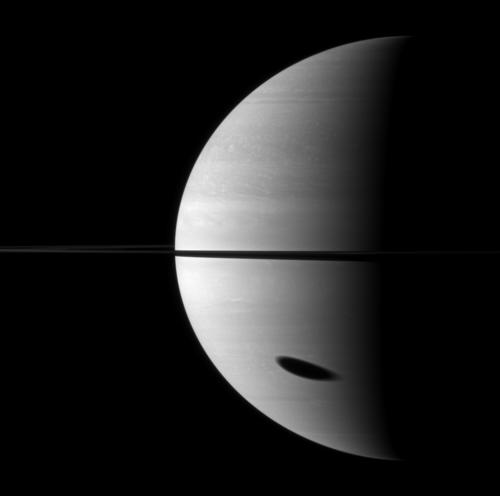This is very interesting, because ratio 1 is unique to Earth. Looks like Jupiter's Amalthea is the closest with 0.9 ratio. I wonder if its orbit allows for blocking of the sun. Generally it is possible - Here is a quote from NASA:
Images taken with a telephoto-lens camera on NASA's Mars rover Curiosity catch the larger of Mars' two moons, Phobos, passing directly in front of the sun -- the sharpest images of a solar eclipse ever taken at Mars. Phobos does not fully cover the sun, as seen from the surface of Mars, so the solar eclipse is whats called a ring, or annular, type.

Image Credit: NASA/JPL-Caltech/Malin Space Science Systems/Texas A&M Univ.
And for the Saturn and Titan:
The shadow of Saturn's largest moon darkens a huge portion of the gas giant planet. Titan (5,150 kilometers, or 3,200 miles across) is not pictured here, but its shad ow is elongated in the bottom right of the image. This view looks toward the northern, sunlit side of the rings from just above the ringplane. The image was taken with the Cassini spacecraft wide-angle camera on Nov. 7, 2009 using a spectral filter sensitive to wavelengths of near-infrared light centered at 752 nanometers. The view was obtained at a distance of approximately 2.1 million kilometers (1.3 million miles) from Saturn and at a Sun-Saturn-spacecraft, or phase, angle of 95 degrees. Image scale is 123 kilometers (76 miles) per pixel.
